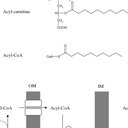BMJ Open 2019-01
Meta-analysis of the diagnostic value of Wisteria floribunda agglutinin-sialylated mucin1 and the prognostic role of mucin1 in human cholangiocarcinoma.
Yalnız qeydiyyatdan keçmiş istifadəçilər məqalələri tərcümə edə bilərlər
Giriş / Qeydiyyatdan keçin
Bağlantı panoya saxlanılır
Açar sözlər
Mücərrəd
OBJECTIVE
Serum carbohydrate antigen 19-9 (CA19-9) is a widely used tumour marker for cholangiocarcinoma (CCA). However, it is not a necessarily good CCA marker in terms of diagnostic accuracy. The purpose of this study is to evaluate the diagnostic value of Wisteria floribundaagglutinin-sialylated Mucin1 (WFA-MUC1) and the prognostic role of Mucin1 (MUC1) in human CCA.


